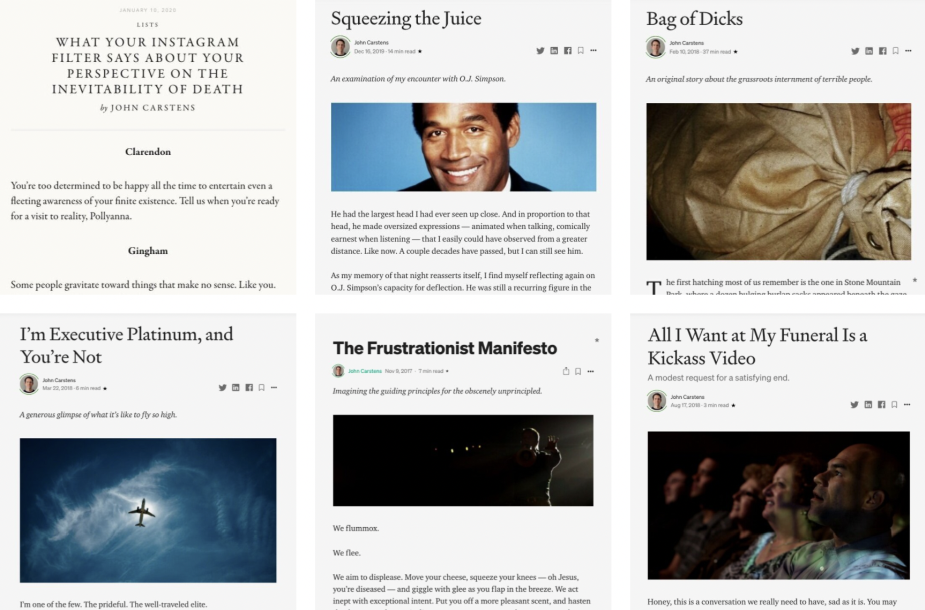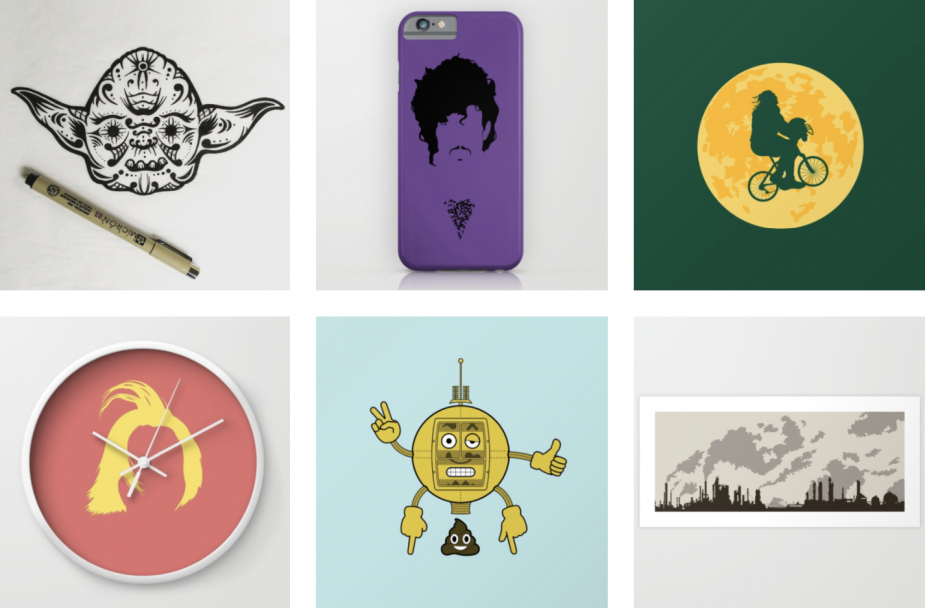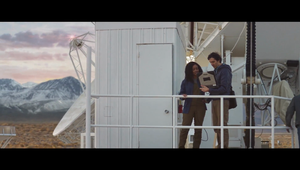
Creativity Squared: John Carstens' Meditative Process

According to creativity researchers, there are four sides to creativity. Person (personality, habits, thoughts), product (the thing that results from creative activity), process (how you work), and press (environment factors, education and other external factors) all play a part. So, we figured, let’s follow the science to understand creative’s art. Creativity Squared is a feature that aims to build a more well-rounded profile of creative people.
John Carstens is an EVP, ECD, Esq., Etc. More specifically, he’s the creative lead of Team DDB, the consortium of agencies in the service of the U.S. Army. This has forced him to improve his posture. He started his career at his dream agency, TBWA\Chiat\Day, where he wrote David Letterman’s favourite Taco Bell Chihuahua commercial. Since then, he’s meandered across the country and client categories, from luxury cars to software to ketchup. An extended foray into digital transformation left him with a pixelated left hand, but he’s still stronger than he looks. He lives in the Chicago suburbs with two farting teenage boys and a tolerant wife.
His entry to Creativity Squared is below.
Person
I’ve been described as "surprisingly mellow for someone so anal." That’s probably accurate, and only mildly unflattering. I can get pretty obsessive about the details of execution, from colours to commas. But for me it’s almost meditative, like working on a jigsaw puzzle. (I’ve done a lot of those during the pandemic.) It also comes after the idea stage where my mind has been free to chase fireflies and fall down holes, maybe tickle a few bears. The interplay between these two states—expansive and focused—is what I love most about what I do, and I suppose it centres me, making me less of a pain in the ass when I’m redlining all your little mistakes.
Others may say I’m a variety seeker, an arbiter of good taste, a highly self-monitoring introvert, silly yet erudite, taller than you, more analytical than most, and that I need to use smaller words. ‘Others’ is me. I may say those things. About myself. I put a lot of energy into exercises like this to show how exhausting my relentless self-examination can be.
Product
How do I judge the creativity of a piece of work? Is it surprising? Mind-changing? Did I feel a dopamine hit? A resurrected experience? One of my favourite movie scenes is in Ratatouille, when the food critic takes a bite and is transported to a long-dormant childhood memory. My chin quivers just thinking about it, and I hope my team gets to see that from me when I’m looking at work. Mainly because I enjoy an awkward moment.
I also try to channel the intended audience’s reaction, not just the personal preferences of this suburban dad who reads The New Yorker on a British toilet. Our ‘What’s Your Warrior?’ campaign for Army drew on Gen Z’s cultural frame of reference, not the arthouse aesthetic my industry peers tend to favour; it was wildly successful with young people who aren’t griping about the state of advertising on LinkedIn. I’m particularly proud of our range of expression on this account, including the world-on-fire rallying cry in our Army National Guard work, ‘The Next Greatest Generation Is Now’, and the deeply personal stories in our animated series ‘The Calling’.
I’m a traditional copywriter by trade, but I’ve also parked myself at places like Sapient and Apple to develop a broader view of the entire ecosystem. From that perspective, creativity can solve a lot more problems than just hitting the right story beats. This multi-agency entity we’ve built for the Army, Team DDB, is getting as close to delivering precise, predictable performance as I’ve seen in my career, but we’re trying to keep the creative process from feeling like math, i.e., putting as much rigour into creating the conditions for breakthrough work as we are into the work itself. I try to convince the creatives to embrace the complexity because it will future-proof their careers. As for me, I enjoy these new brain games this business is throwing at us. Well, some of them.
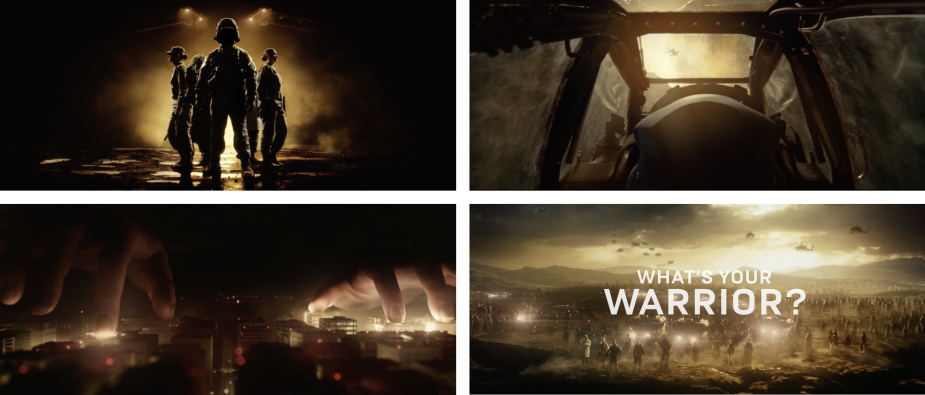
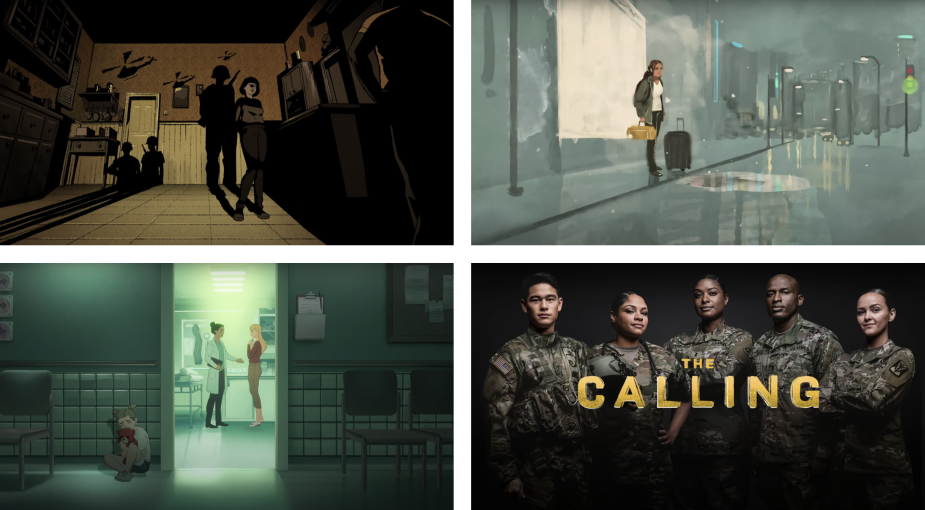

Process
Jerry Seinfeld once said this to an interview question: "Where do ideas come from? Can you imagine the arrogance of someone trying to answer a question like that?!" So let me tell you. Ideas come from the frontal cortex, which gets its source material from the hippocampus and basal ganglia. I’m no neuroscientist, but I know how to use the internet.
Seriously, though: after all these years, I still start with an A5 notebook and a semi-recumbent posture. My scribbles are messy at first, because I just want to keep the ink flowing with all sorts of tangents and free associations, which inevitably leads me to look things up online and go down a bunch of wormholes—movie clips, Wikipedia entries, listicles, artists’ Instagram posts. “Just feeding the notebook,” I’ll say to anyone who asks what Ingmar Bergman has to do with canned tomatoes. Eventually I start organising the mess: bracketing the ideas I like, creating spider charts of story elements or program mechanics around them, and eventually doodling some key visuals or even presentation storyboards.
When I’m organising ideas (not just my own) for a larger team, I sure love a big fat whiteboard. I’ve gone through a lot of markers drawing diagrams, flows, and caricatures of my colleagues. At a past agency they’d say, "John’s doing his Beautiful Mind thing." I don’t know if they were impressed with the connections I was making or pointing out my social deficits.
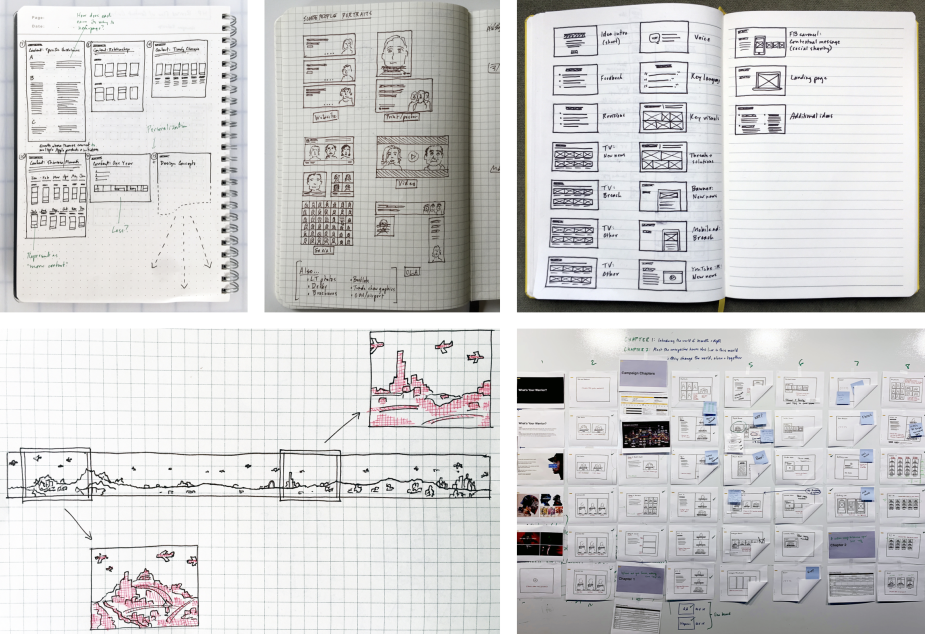
Press
My first love was drawing. As a kid I filled reams and reams of paper with superheroes, spaceships, robots, sports cars, and monsters, and imagined myself becoming a cartoonist, movie producer, and/or product designer. When I started getting into writing, my themes were grounded in realism but with absurdist elements. Judy Blume, Indiana Jones, Salvador Dalí, Nike Air Revolutions, Living Colour, and the Seattle Seahawks logo were early influences. As a teen, ‘The World According to Garp’ turned me on to the writer’s life, and ‘Thirtysomething’ diverted my attention to advertising. I’m lucky to have found a career where my interests can make their way into the work, but still, I have other outlets for art and copy that have nothing to do with what the client is selling—like Medium for my random musings, or Society6 for my dumb doodles.
I’m the son of a professor and a schoolteacher, so education was always a priority in our family. There was a lot of reading and pontificating in our home, and while I have salutatorian on my CV, my siblings have accumulated some really scary academic credentials. I picked up my dad’s habit of thinking out loud, and my mom’s tendency to ask lots of questions. These lead me to some lightbulb moments but apparently make me annoying at times; my wife’s and my first argument was because I asked way too many questions about fondue.
Final note: I don’t look like someone who would benefit from our industry’s renewed focus on DEI, but I love what it means for creativity. The organisation’s, yes, but also mine. I like an agency that surrounds me with people who would answer this ‘Press’ question completely differently, so I can port their memories like a thousand replicants. Blade Runner reference. I need to get out more.
